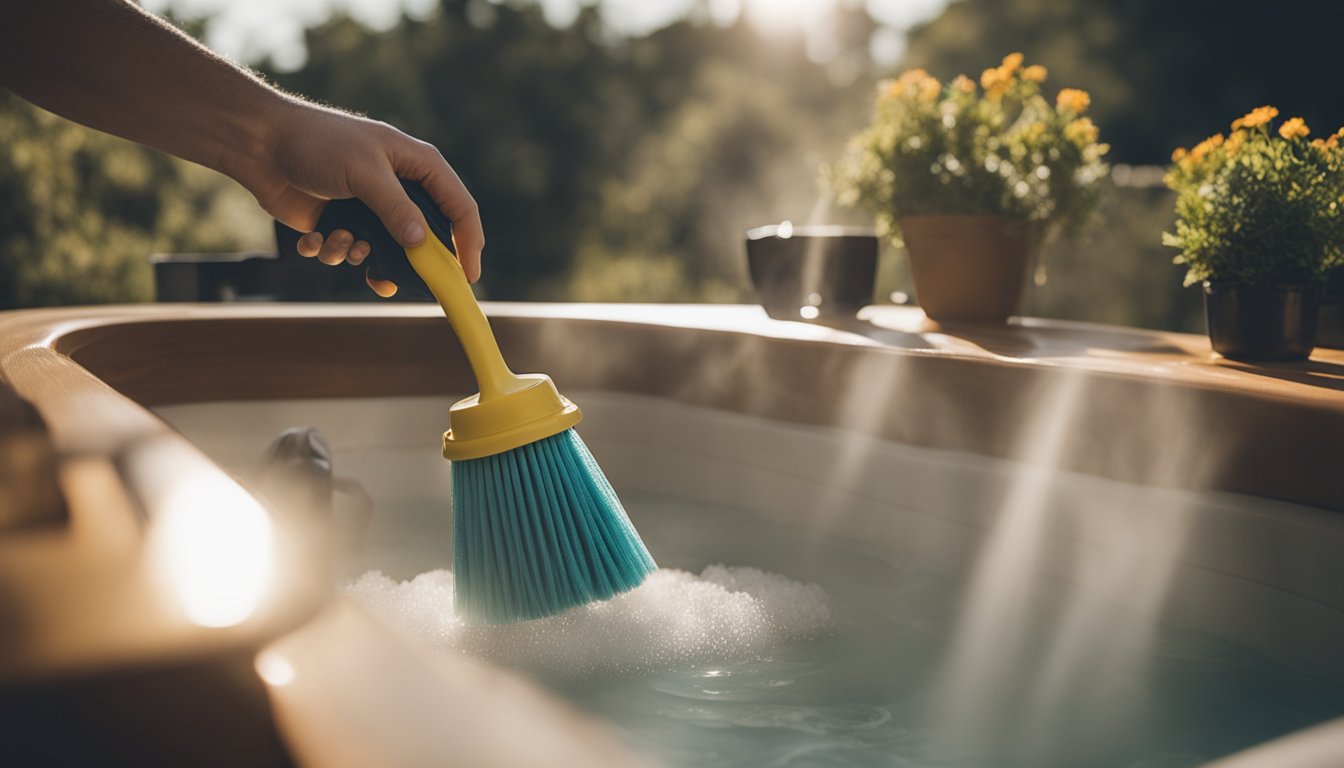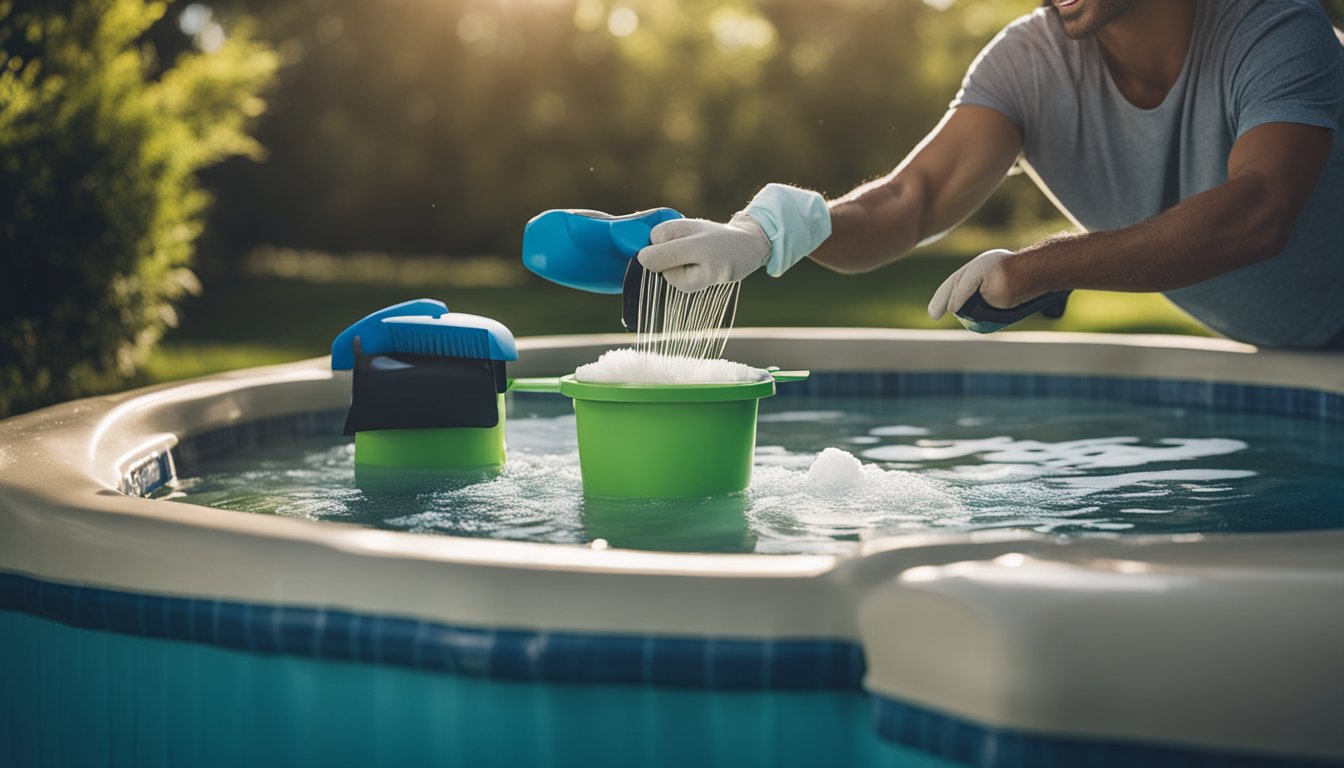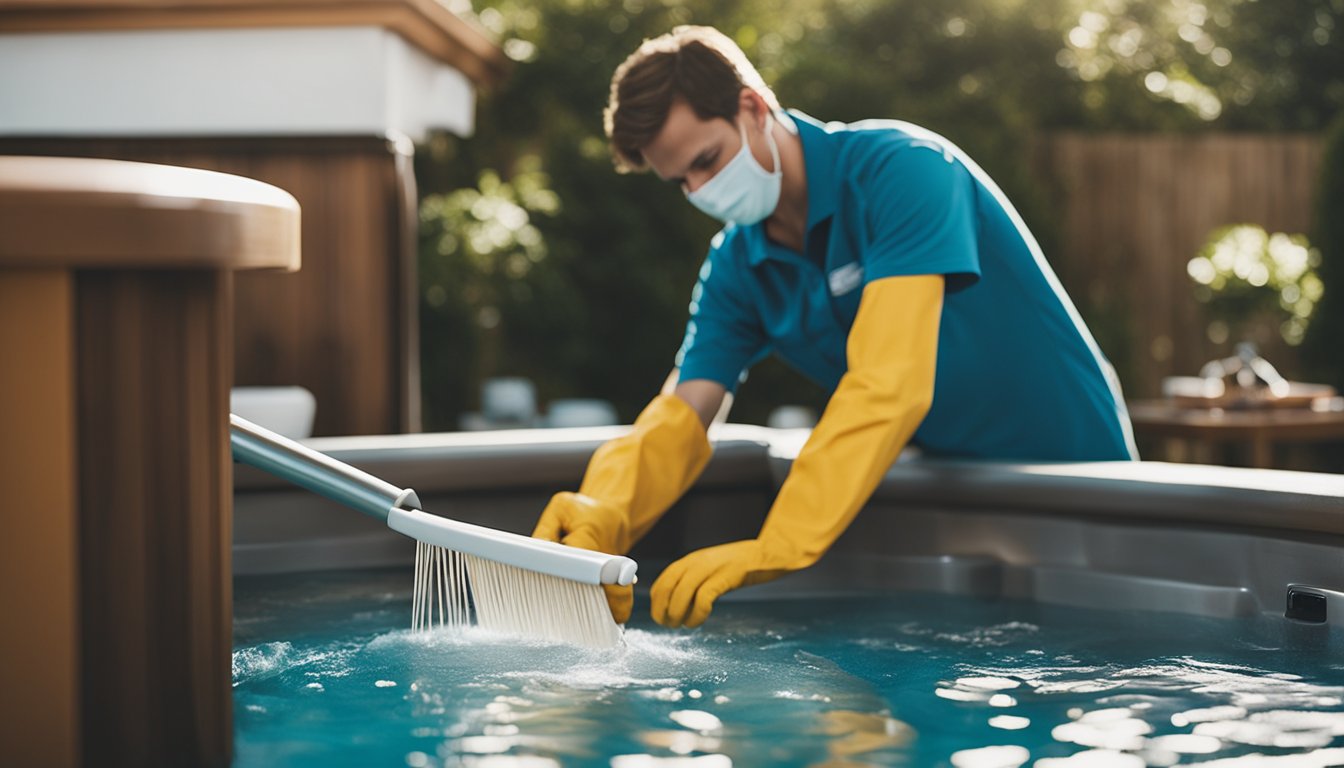Late updated: 08 Feb 2025 08:02
Written by: James Whitaker
Budget-Friendly Hot Tub Cleaning Tips for Every Homeowner
Maintaining a clean hot tub doesn't have to break the bank. With a variety of budget-friendly options at our fingertips, we can keep our hot tubs sparkling and inviting without overspending. Utilising simple household items like vinegar can not only save money but also offer effective cleaning solutions. By understanding a few key techniques, we can ensure our hot tub remains a relaxing retreat without excessive costs.

Incorporating natural cleaning methods can also significantly ease the financial burden. Regular cleaning prevents the build-up of contaminants, which is crucial to extending the lifespan of our hot tubs. Let's not overlook the importance of routine maintenance, which is both cost-effective and vital to keeping the water chemistry balanced.
We will explore practical insights and actionable tips that can transform our hot tub cleaning routine from costly to economical, all while maintaining hygiene standards. This approach not only saves money but also ensures that our hot tubs provide the serene experience we desire.
Key Takeaways
- Budget-friendly solutions can effectively clean hot tubs.
- Regular maintenance prevents expensive repairs.
- Natural cleaners offer cost-saving benefits.
Understanding Hot Tub Water Chemistry
Hot tub water chemistry is vital to keeping the water clean and safe for use. We should focus on balancing pH and sanitiser levels, regularly testing water quality, and choosing the right sanitisers, such as chlorine or bromine, to maintain the optimal condition of our hot tubs.
Balancing PH and Sanitiser Levels
Balancing pH and sanitiser levels is essential to prevent skin irritation and keep the water clear. pH levels should be maintained between 7.4 and 7.6. An imbalanced pH can cause corrosion or scaling, leading to potential damage to our hot tub.
Sanitisers, such as chlorine or bromine, play a pivotal role in killing bacteria and maintaining a healthy hot tub environment. Striking the right balance ensures that these chemicals work effectively without being overly harsh. Regular monitoring is necessary to keep sanitiser levels within the recommended range for optimum effectiveness.
Using pH and alkalinity increasers or decreasers can help us adjust the water chemistry as needed to maintain this balance. Having test strips handy allows us to quickly assess whether further adjustments are necessary.
Testing Water Quality
Routine testing of our hot tub's water quality is crucial for maintaining a safe and inviting soaking environment. Test strips or kits enable us to check key parameters such as pH, alkalinity, and sanitiser levels.
Testing should be conducted at least twice a week. Regular checks make it easier to identify and correct any imbalances before they develop into more significant problems.
Water testing ensures that contaminants are effectively eliminated. By promptly adjusting the chemical levels, we prevent the build-up of harmful bacteria and prolong the lifespan of our hot tub equipment.
Staying vigilant with water testing confirms the effectiveness of our sanitisation efforts, providing peace of mind that our hot tub remains in pristine condition.
Choosing Sanitisers: Chlorine vs Bromine
Choosing between chlorine and bromine as sanitisers depends on specific needs and preferences. Chlorine is known for its affordability and rapid action, making it a popular choice. However, it requires careful monitoring as it can produce a strong odour and irritate skin if levels are too high.
Bromine offers a more stable option, maintaining effectiveness over a wider pH range. It tends to be gentler on the skin and persists in the water longer, requiring less frequent dosing. Although more expensive than chlorine, bromine is preferred by those who want a milder chemical presence.
Ultimately, our choice should reflect our personal preference, budget, and how frequently we use the hot tub, ensuring a clean and enjoyable experience.
Regular Hot Tub Cleaning and Maintenance

Regular maintenance ensures our hot tub stays clean and functional while extending its longevity. Key areas include maintaining filters, preventing and addressing scale buildup and stains, keeping the hot tub cover clean, and implementing strategies to prevent unpleasant odours.
Filter Maintenance: Cleaning and Replacing
We must focus on cleaning filters, as they are vital in maintaining water cleanliness. It's essential to rinse the filter cartridge every 1-2 weeks using a hose to remove larger debris. For deep cleaning, soak filters in a filter cleaner solution monthly. Over time, filters wear out and require replacement, generally every 12-18 months, to maintain effectiveness. Regular inspection ensures optimal performance, guarding against poor water quality in our pool environments.
Dealing with Scale Buildup and Stubborn Stains
To tackle scale buildup, we should regularly check and balance the water's pH and alkalinity. Hot tub cleaning products designed to prevent scale are particularly useful. For persistent stains that defy ordinary cleaning, using commercial hot tub cleaners can effectively remove them. It's crucial to keep the surfaces clean, as untreated buildups can lead to more significant maintenance issues over time.
Keeping the Hot Tub Cover Clean
The hot tub cover needs regular attention to prevent dirt accumulation and extend its lifespan. We recommend taking it off periodically and cleaning it with mild soap and water. This not only enhances its appearance but also protects it from damage and wear. Additionally, using a vinyl protector can help repel water and sun damage, ensuring longevity. Ease of use improves when these steps are incorporated into routine maintenance.
Routine Steps to Prevent Unpleasant Odours
Addressing unpleasant odours often involves ensuring proper water chemistry and regular cleaning. Sanitise the water as needed and verify the chemical balance weekly. We should also maintain cleanliness by wiping the interior surfaces with appropriate cleaners to avoid mildew and bacteria growth. By incorporating these steps into our routine maintenance, we preserve the fresh and inviting atmosphere of our hot tubs and swim spas.
Frequently Asked Questions

In managing the upkeep of a hot tub, cost-effective solutions often involve using common household items, and specific cleaning strategies can help maintain it while watching your budget. These tips address cleaning techniques, suitable products, and routine practices.
How can one clean a hot tub using vinegar?
Vinegar is a versatile and affordable cleaning agent. We recommend mixing equal parts of water and white vinegar in a spray bottle. Apply this solution directly to the hot tub shell and allow it to sit for several minutes before wiping softly with a non-abrasive cloth.
What are cost-effective methods for cleaning a hot tub shell?
Maintaining the shell need not be pricey. Baking soda can be an economical option for scrubbing away stains. Simply sprinkle a small amount onto a damp cloth and gently rub over the affected areas. Regular skimming can also minimise debris and reduce the need for deep cleaning.
Is it possible to use household items such as dish soap to clean a hot tub?
It’s possible to use a gentle dish soap for hot tub cleaning, but sparingly. A few drops mixed with warm water can help remove grime. However, it’s essential to rinse thoroughly to avoid soap residue, which could affect water quality or cause foaming.
What strategies are recommended for cleaning a hot tub that is currently full?
If your hot tub is full, using a skimmer net regularly helps remove any surface debris. For cleaning surfaces without draining, a soft cloth or sponge works well to wipe down the interior walls. Ensure any cleaning agent used is safe for contact with water to prevent contamination.
Can common cleaning products like Magic Eraser be safely used on hot tub surfaces?
Magic Erasers can be effective for tackling stains on the shell. Yet, it's crucial to test on a small inconspicuous area first to ensure no damage occurs. These sponges should be used lightly and with caution to avoid scratching or wearing down the surface material.
What are the best practices for maintaining a hot tub on a budget?
Routine tasks like testing and balancing water chemistry are crucial and can be cost-effective with a basic test kit. Keeping the filter clean by rinsing it weekly and soaking it monthly helps maintain performance. Utilising an insulated cover also aids in conserving energy and reducing costs.
